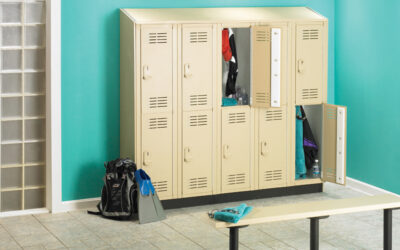Choosing the Best Option for your Environment
Do you need a fire extinguisher cabinet? The answer could be confusing. After all, neither the National Fire Protection Association nor Occupational Safety and Health Administration requires you to have one. However, you must not disregard the importance of fire extinguisher cabinets. They serve as a deterrent against theft and misuse.
Fire extinguishers protect us from fire fatalities, but misuse can still be harmful. Fire extinguishers contain chemicals with potential health risks when inhaled. Without a fire extinguisher cabinet for protection, it can be prone to misdeeds. A cabinet also helps you avoid damage and theft. Read on for advice about choosing the right cabinet for your space.
1. Choose the Correct Size
The dimensions of your fire extinguisher cabinetdepend on the size of the item you intend to store. Consider three dimensions:
- Height
- Cylinder depth
- Extinguisher width
You can check the size with the manufacturer. Your cabinet should have at least 1” clearance at all sides. If you don’t have a fire extinguisher yet, check what type and size you’re likely to buy. It has several varieties depending on usage, such as:
- ABC
- CO2
- Class K
- Halotron
- Water-Based
- Purple K
These varieties have different designs, which may affect the size of the cabinet you have to buy. A CO2 fire extinguisher, for example, has another canister by its side. Some have larger nozzles than others. Fire extinguishers come in a variety of sizes. They can weigh as little as 2.5 lb or as much as 350 lb. Some won’t fit in a cabinet, though. Consider your staff when determining the correct size.
2. Check the Location
The location where you plan to put the cabinet also matters. It dictates the type and size of the fire extinguisher. To learn the best option for you, check the fire risks in the area. ABC fire extinguishers fight fires fueled by organic materials, flammable liquids, and electricity. As such, they’re best for homes and even office buildings.
However, they’re not appropriate for commercial kitchens, where oils and grease may fuel the fire. Restaurants use Class K fire extinguishers instead. Schools often use water-based ones, which don’t contain chemicals. The Halotron types are perfect for rooms with electrical equipment, as they don’t leave residue behind. The location and fire risks dictate the type you have to get. In turn, it determines the right cabinet for you.
Aesthetic and Traffic
Another consideration is the aesthetic. It may matter more in homes, where a homeowner can choose to blend it in with the interior design. It’s not an issue if the cabinet still serves its purpose. A bulky cabinet may become an eyesore in living spaces.
You also must consider the foot traffic in the area. Do you expect hundreds of people to pass by it every day? If so, then the type of cabinet matters. A recessed design doesn’t take up space, especially in a narrow hallway. At the same time, it’s visible and accessible. A semi-recessed option is also available.
3. Consider the Cabinet Material
A cabinet for a fire extinguisher has different materials: wood, metal, or plastic. The best option depends on the environmental conditions and your preferences. Aluminum and stainless steel are popular because they are inflammable. This feature keeps the extinguisher safe even if the fire has already reached the room.
Plastic cabinets work best in outdoor settings. Fiberglass and galvanized steel are your other options for exterior use. They’re affordable and can resist weather conditions. Some cabinets are wooden, providing a classy and elegant look. They’re popular in homes and doctor’s offices. This material, however, can’t handle bigger fire extinguishers.
Fire Rating
A fire extinguisher cabinet has fire ratings which indicate the amount of time it can withstand a fire, which is also important to consider.

4. Review the Wall Mounting Options
There are three types of fire extinguisher cabinets based on their mounting feature. You can choose recessed, semi-recessed, or surface mounted.
Recessed cabinets are one of the most common options. They tuck into the wall, which means you must make a hole to install it. They don’t take up space in the room, but they do in the area behind it. Homeowners who prefer this option are better off hiring a professional to install it. Otherwise, they might damage the structure of the house.
Surface-mounted options are also popular because they’re straightforward to install. However, they might not be compliant with the Americans with Disabilities Act. Some semi-recessed cabinets are ADA compliant. However, you also must cut into the wall for this one.
5. Select the Best Door for You
You must think about the handle and locks in the cabinet door. Make sure it’s accessible depending on the people who will use it. The cabinet shouldn’t have a lock to make it easier to open in an emergency. However, some areas pose a high risk of damage or malicious use where the best you can do is to lock it.
Still, the lock should be easy to navigate. The “break glass” feature is famous for this reason. It deters malicious use because it makes a mess, but it’s easy to break the glass when necessary. You also have to consider ADA standards. The door pull handle of the cabinet is under the “operable parts” section. It must be usable with one hand without twisting or pinching.
Learn More About Choosing a Fire Extinguisher Cabinet
As you can see, there are a lot of necessary factors to discover the best fire extinguisher cabinet. It’s a matter of safety since careless decisions can lead to unnecessary losses down the road. It can be challenging to choose the best fire extinguisher cabinet. If you need some help, contact us today.



